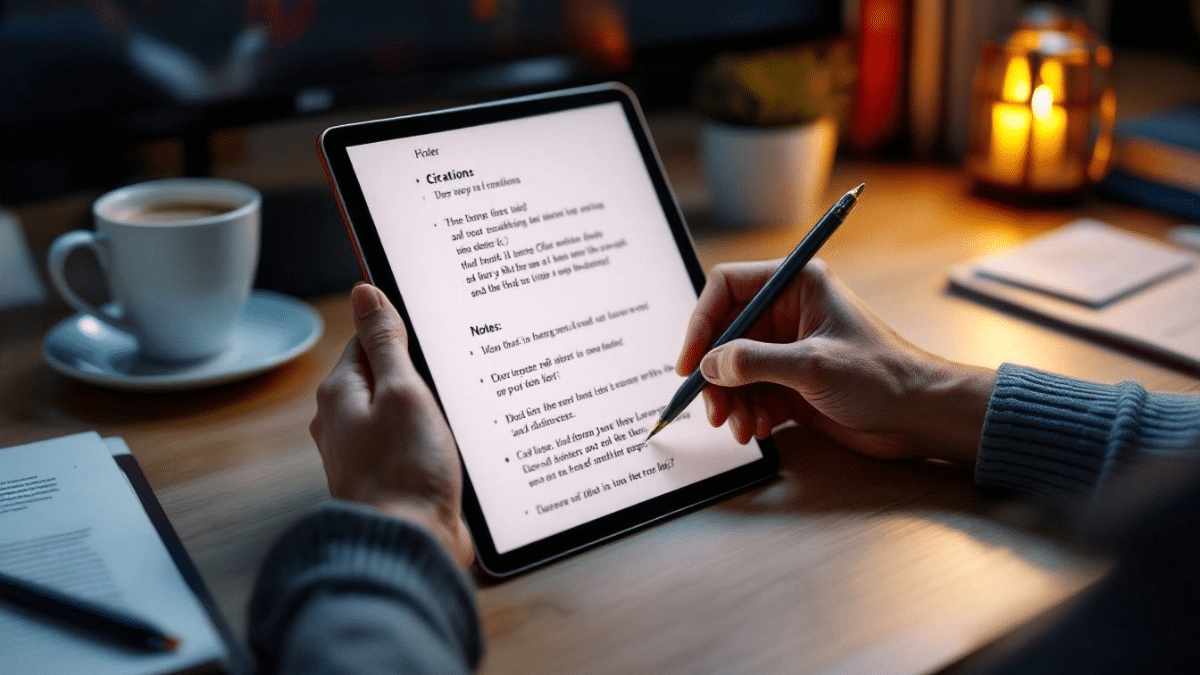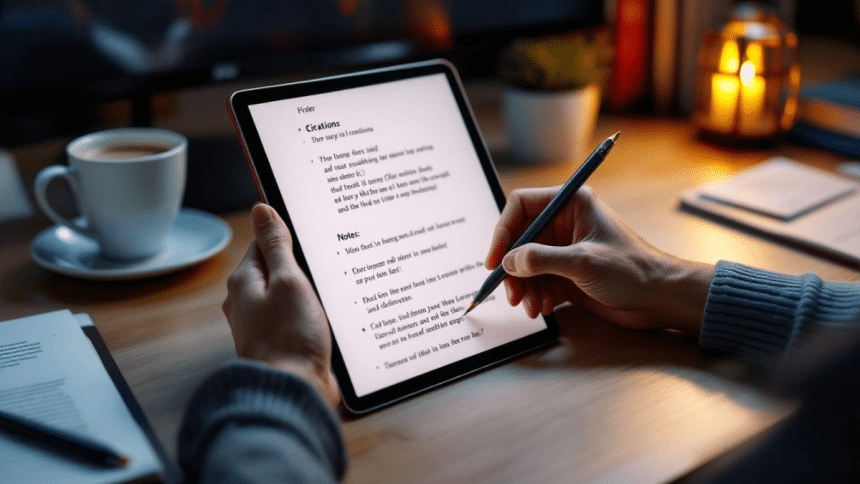Picking the right essay app feels like choosing a study partner who never tires. Many learners juggle tight timetables, packed lessons, and heavy reading lists each week. Extra help makes sense when time feels short and tasks keep stacking. Digital tools now handle quick ideas, clear outlines, and clean grammar with little effort. Early searches often bring up WritePaperForMe, a popular service with custom help and simple templates. That site is only one part of a large and growing set of options. Mobile planners track due dates, while cloud editors smooth each line with smart checks. These tools can lift the load and make school days feel less tense. This guide explains how each option functions, which features truly help, and where smart use stops and shortcuts begin. By the end, you will spot the best essay app for your needs, understand how apps that write essays for you operate, and see why balance with real effort builds stronger, more confident writing.
Why Learners Use Technology for Essays
Long school days leave little room for slow drafts and careful rewrites. Clubs, part-time work, and home tasks can squeeze study time to the edge. That time squeeze makes smart tools feel like a fair and helpful choice. A good essay app acts like a patient assistant for routine steps. Outline helpers place key points in order so ideas stay clear. Spell tools fix slips before a teacher sees them on the page. Citation aids calm last-minute stress over commas and dates in sources. Phones sit in every pocket, so notes typed on a bus sync at home. Cloud saves protect work from sudden crashes or lost devices. Voice-to-text records fresh thoughts while walking between classes. These gains turn short gaps into useful bursts of writing and review. Students guard their free time while keeping a steady quality across assignments.

Traits of a Strong Essay App
Not every tool earns a place on a learner’s home screen. The best apps share simple traits that raise them above plain editors. Ease of use comes first for steady progress and calm focus. Clear icons, guided steps, and a tidy space keep writers on track. Flexibility for many tasks also matters across varied school demands. Good apps handle short opinion pieces and longer reports with subheads. They offer adjustable templates without locking users in rigid forms. Accuracy needs care so alerts fix real errors and avoid noise. Grammar checks should spot true issues and skip false flags for beginners. Style rules for sources should stay current with the latest guide updates. Teamwork helps when sharing drafts with classmates, tutors, or mentors. Simple links for feedback reduce messy email threads and lost versions. Safety rounds out the list with strong encryption and two-factor logins. When these parts work together, the app becomes a trusted study partner.
Key Features Students Should Seek
Typing is basic, yet certain tools raise simple software into a real helper. Real-time grammar tips mark issues as they appear and save later edits; a thesis helper builds a clear claim from brief guided inputs; an outline tool lets users drag headers to reorder ideas with ease; a source finder pulls peer-reviewed pieces and builds matching citations with one click; a plagiarism checker scans the web and school databases to keep work original; a focus mode mutes alerts for set blocks so attention stays on the page. When several of these sit together, an essay writer app turns into a small writing lab. Learners who pick at least three of these parts often see higher marks and less stress near deadlines.
Popular Essay Writing Apps Available
App stores are full, yet some names keep strong spots in reviews. Grammarly acts like a careful proofreader and style coach for clear lines. It flags wording that might confuse a reader in middle grades. Hemingway Editor takes a firm line, marking long lines and passive voice. Students who plan first often like Evernote and Notion for neat notes. They mix cards, lists, and cloud sync for tidy research sessions. Google Docs stays a mainstay for live comments and quick team edits. It gains strength with add-ons that build citations and tidy formats. JotterPad and Ulysses bring clean screens that suit phones and small tablets. Each platform offers strong points and certain limits that shape its best use. The smart move is to match tools to your habits and weak spots. Test free tiers, then upgrade the essay writing app that feels natural.
How Apps that Write Essays for You Work
Some services move beyond hints and produce whole lines and sections. Many learners wonder how these engines build fresh text so quickly. Most rely on large language models trained on many public sources. When you enter a prompt, the model predicts the next likely word. Those guesses chain together into lines that read like human writing. Makers add controls for tone, length, and source style to guide output. The engine searches for learned patterns and blends shapes that match your prompt. The new text aims to pass originality scans while staying on topic. Machine writing is not magic and can miss key facts or rules. It can mangle dates, break local spelling, or give flat arguments. Wise users treat the draft as a base, not a final product. Check claims, tune voice to class rules, and add your own analysis. Careful edits save hours while keeping grades and learning on track.
Balancing Essay Help with Academic Integrity
Schools prize clear thought and honest effort in each paper turned in. They also accept that real support can help during busy seasons. The line between help and misuse needs a clear and steady rule. Tools that fix grammar, suggest simple words, or highlight vague lines feel fair. Trouble starts when users hand in pages they did not form or understand. Try the explain-aloud test for any part pulled from a tool. If you cannot say it plainly in speech, it should not stay in print. Give credit for any idea, number, or phrase pulled from a source bank. Treat those items like quotes from books, journals, or class slides. If doubts remain, check your school policy or ask a teacher early. Honest work paired with smart digital help keeps trust and learning strong.
Tips for Effective Use of an Essay Writer App
Installing software is the start, while wise habits unlock real value. Set clear goals before you open the program, like length, due date, and sources. That plan keeps advice tight and avoids wasted clicks and side paths. Tune settings for language form, reading level, and citation style at once. Small tweaks early prevent long edits near the last-minute rush. Work in stages to reduce stress and keep focus strong from start to end. Start with idea maps, move to a rough draft, then run deeper checks. Saving versions in the cloud guards against errors or lost files. Version history also lets you compare changes and learn from small shifts. Short breaks keep energy high and help ideas stay fresh on the page. Use built-in timers or simple phone alerts to pace steady sessions. These steps let any app add speed and polish without losing your voice.
Common Mistakes When Using Writing Apps
Even sharp tools fail when users fall into a few common traps. Overuse is first, where the program supplies every link and turn of phrase. That habit can leave pages that sound flat, stiff, and oddly alike. Another mistake is ignoring the rules set by teachers or course guides. Apps offer broad tips, yet classes can need formats that differ a lot. Skipping a final human read lets small slips slide through to the end. Spell tools can miss pairs like their and there when both are valid. Time saved never should replace one calm pass with your own eyes. Running an old version can also bring avoidable errors into a paper. Makers push fixes and rule updates that you should install right away. Some users trust only local saves and forget to back up their work. A late crash on a phone or laptop can ruin a full week’s progress. Avoid these traps to keep the bond between you and the app helpful.
Future Trends in Essay Writing Technology
Essay tools keep changing fast, and the next wave looks very useful. Adaptive feedback is on the rise, shaped by each user’s past drafts. Tips will aim at repeating weak spots and building steady gains over time. Many types of input will feed drafts, not just plain text boxes. You may add charts, short audio notes, or images that shape clear lines. Voice-led edits will let users fix pages while riding or walking. Smart links to research banks will pull new peer-reviewed work with speed. Stronger privacy will guard data through more on-device processing steps. Makers will limit what leaves your phone or laptop during each run. Light game elements may turn long tasks into small goals and steady wins. Badges and bars can keep driving high during long weeks and busy terms. The best essay app in the coming years will join smart engines with human skill. That mix will help writers move faster while keeping their own thoughts and voice.











